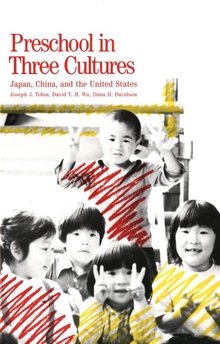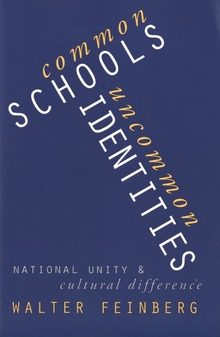Learning to Be Adolescent
WARNING
You are viewing an older version of the Yalebooks website. Please visit out new website with more updated information and a better user experience: https://www.yalebooks.com
Growing Up in U.S. and Japanese Middle Schools
Gerald K. LeTendre; Foreword by Thomas P. Rohlen
The organization of middle schools and the practices of middle school teachers in Japan and the United States differ dramatically, Gerald K. LeTendre demonstrates in this compelling comparative study. Based on his long-term observations in Japanese and American schools and on analyses of curricula and classroom practices, the author describes what teachers, administrators, and counselors in each country believe about adolescent development. He explores how these beliefs are put into practice and how they affect adolescent development.
In both nations, LeTendre observes, school personnel are extremely concerned with volition: the developing willpower of young adolescents. But while both Americans and Japanese believe that nurturing a young person’s ability to use his or her will is crucial, they take very different approaches to dealing with expressions of will. LeTendre also finds conflicting expectations and theories about adolescent development within each system, and he investigates how these can lead to confusion and contradictory rules.
In both nations, LeTendre observes, school personnel are extremely concerned with volition: the developing willpower of young adolescents. But while both Americans and Japanese believe that nurturing a young person’s ability to use his or her will is crucial, they take very different approaches to dealing with expressions of will. LeTendre also finds conflicting expectations and theories about adolescent development within each system, and he investigates how these can lead to confusion and contradictory rules.
Gerald K. LeTendre is assistant professor in the Department of Education Policy Studies at the Pennsylvania State University. He has extensive research experience with cross-national achievement studies and has written widely on the education of young adolescents in Japan and the United States.
“LeTendre fills his fascinating comparison of adolescence in Japanese and American middle schools with wonderful ethnographic detail.”—Merry White, author of The Japanese Educational Challenge and The Material Child
"A fascinating study of adolescents and their schools in two countries whose education systems are often compared. The book should interest a wide audience—from those interested in international education studies, such as TIMSS, to anyone who has raised an adolescent."—Susan Fuhrman, University of Pennsylvania
"A fascinating study of adolescents and their schools in two countries whose education systems are often compared. The book should interest a wide audience—from those interested in international education studies, such as TIMSS, to anyone who has raised an adolescent."—Susan Fuhrman, University of Pennsylvania
“[C]learly written, methodologically solid.”—J. A. Ganradt, Choice
“An insightful comparative analysis of the ways cultural logic intersects with the construction of educational institutions and reform agendas. His emphasis on how schools run and what teachers believe casts important light on the largely neglected role of culture in shaping middle school structure and goals and their impact on students. . . . A valuable resource for scholars, policy makers, and educators. . . . In addition, it will be helpful for teachers with students from a variety of linguistic, ethnic, and religious backgrounds.”—James J. Shields, Comparative Education Review
“The book is a fine example of comparative research based on an ethnography of institutions in two societies, the United States and Japan. The outcome is a reader-friendly, vivid account that illuminates striking differences between the United States and Japan in the notions of adolescence, which guide how schooling is organized and how the young are expected to acquire ‘maturity’. . . . This book makes important contributions to our understanding of Japanese schooling and how it relates to wider society. . . . The book offers fascinating new insights into this crucial period of youth development. . . . The study would also interest those who study general theories of adolescence (both psychological and sociological), and scholars and social theorists who want to explore the modern sense of self and individuality beyond that of an autonomous and inwardly turned self which tends to remain pervasive in the West.”—Kaori H. Okano, Journal of Japanese Studies
ISBN: 9780300182675
Publication Date: November 1, 2000
Publication Date: November 1, 2000
258 pages, 6 x 9








